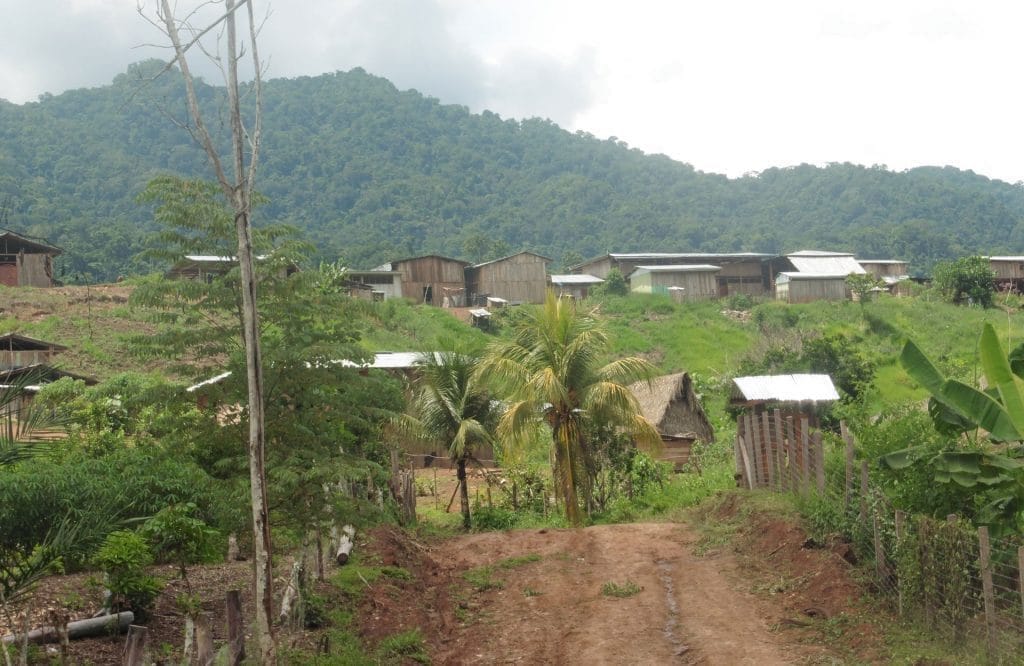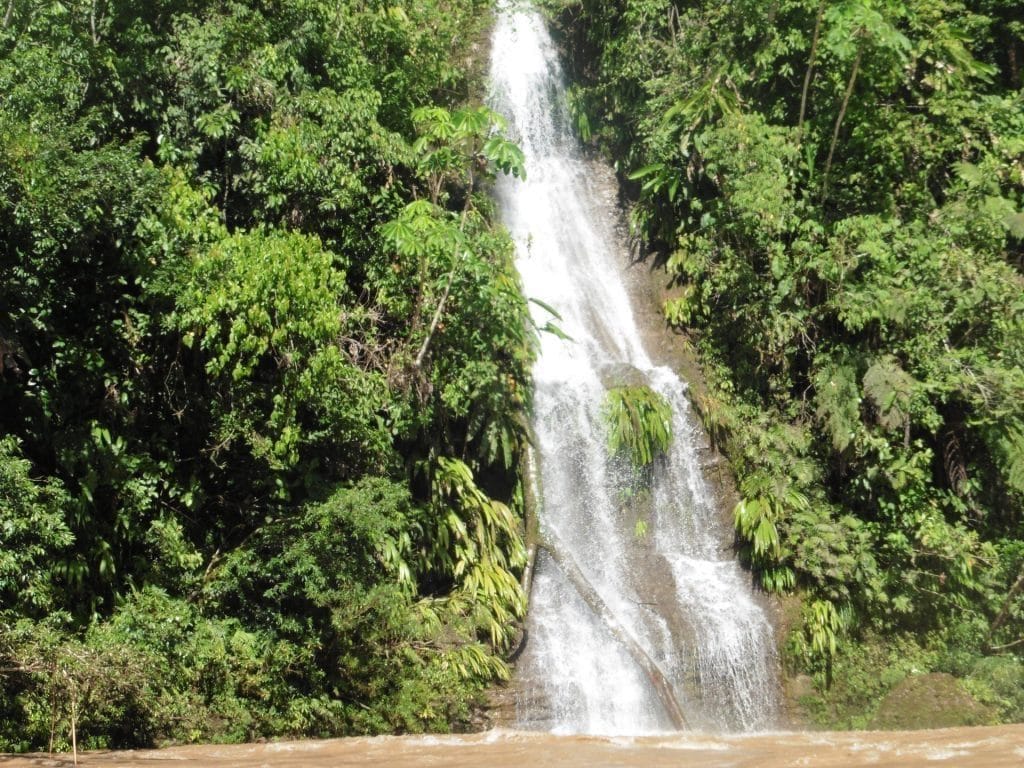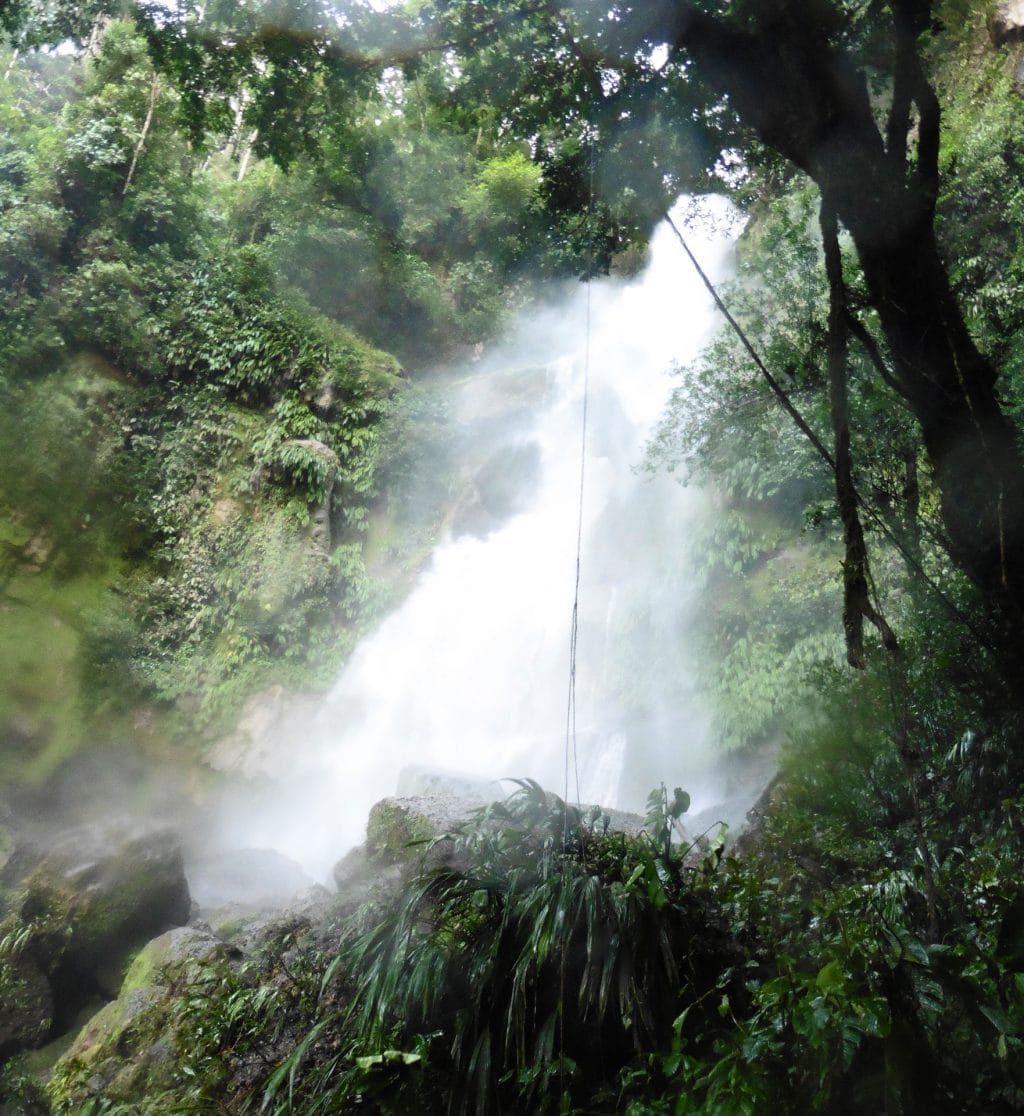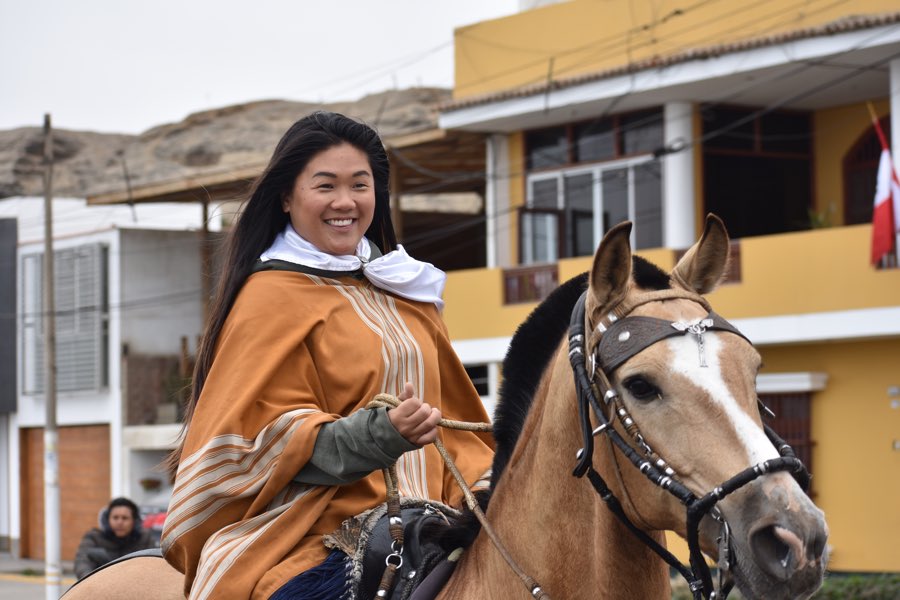The Breo Reserve is a paradisiacal reserve located in the Amazon, in the San Martin region of northern Peru. Today you will discover this paradise on earth.
How to get to the Breo Reserve
To get there, you must leave Juanjui, in the San Martín region in northern Peru. In the small port of Huallaga River, we embark on a ship, often already well loaded with passengers and food.
It crosses through beautiful landscapes of green hills that rise to the edge of the great river. Palm trees, sugarcane plantations, forests. The boat stops in the communities to raise or lower people, food or equipment.
You can stop at Nuevo Chimbote. Originally, this community was called Chimbote and was right on the river. But last year, the waters rose much more than normal during the rainy season and razed the village. In a magnificent example of resilience, the inhabitants have rebuilt their homes in a very short time, and more obviously in height. They welcome us with curiosity and kindness, it’s time to share a cold beer and a conversation.

The arrival at the Breo Reserve
The control point of the APROBROC association marks the entrance to the Breo reserve. You can leave your things there. Just charge your camera, swimsuit and towel before returning to the reservation.
The Huayabamba river is narrower and meanders in the hollow of an increasingly imposing canyon. On the shore, the primary forest is offered to us. Very fast, we cross a waterfall, then another. In the distance, we can see the magnificent Cajañahui waterfall that is very close. To enter the Pishco Canyon, you must pass in front of this great waterfall and, above all, with impressive rapids. But the pilot is our leader and the boat passes without problems. We pass in less than 15 seconds.
The Breo Reserve
The landscapes are great. The Breo Reserve is the planet of the movie Avatar. As we are in the rainy season, the waterfalls are particularly numerous. I am fascinated with all this water: where does it come from to fall with so much power and without running out?
Many beautiful surprises
We make a first stop. There is nothing special about this place, but we trust Caly, our guide. We enter the forest for 20 minutes along a particularly humid plant wall, hiding spiders of a surprising size but also small parrots with green feathers.
At the end of the road, we walk to the small Cachirrumi waterfall and its basin large enough to allow us to bathe there. With the ambiant heat, it does not take us long to jump! It is in this small corner of paradise where we enjoy our lunch: juanes, specialties of the jungle based on rice and chicken cooked in bijao leaf.

The Breo waterfall
After continuing our boat trip, we head to the famous Breo waterfall. We climb the stairs between the trees and the rock for about 10 minutes. The higher we go, the more the sound of the water enlarges. It is vertiginous and then we see the falls through the trees.
Once at the top, there is no word. In the dry season, the Breo waterfall is simply the most beautiful waterfall I have ever seen. But in the rainy season, it is the essence of the power of nature. It is immense and its waters have hollowed out the stone through which it flows with force.
Descend to the waterfall
We are twenty meters from the waterfall and we already feel the drops. Caly asks us to put on a bathing suit and leave all our things on the site, including the camera. Accompanied by another member of the association, they guide us to descend to the waterfall. With a thousand precautions, we go from rock to rock and walk in the incredibly strong current to cross the waterfall.
Once in front of the waterfall, I look up and I’m dizzy. I feel the force of its current against my legs, the drops that fall on my face. The waterfall does not seem to have a beginning or an end. It is almost unreal. It is in these moments that we understand where the wonderful stories and beliefs of the people of the Selva come from: the Breo waterfall is not a waterfall, it is a force full of life in itself.

The Botanical Garden
Near the community of Santa Rosa, there are concessions of cocoa and banana and a botanical garden.
At a former time, they cultivated coca. Therefore, the earth has been seriously damaged by all the chemicals used. Only the weeds grew. Thanks to the amazing properties of the huahua tree, the soil has been cleaned. Today it is a real garden with more than 300 different plant species. There is also ayahuasca, the famous liana in the heart of Peruvian shamanism.
The place is high, but it also offers a breathtaking view of the mountains and the valley. Everything is beautiful and green.
Discover cocoa
In the Breo reserve, you can go to discover the cocoa and the process necessary to recover and process the grain. When you eat a square of chocolate, you are light years away from suspecting the work it requires only to collect, ferment and dry the beans!
Sleeping in the reserve
After registering at the control point of the Breo reserve, you must take the boat. Upon arrival, we have to walk about 40 minutes to reach the community 2 de Mayo where we spent the night. On the way, in the mysterious forest there is a overlook, which offers a splendid view of the valley where the Huallaga meanders and we can see the 2 de Mayo community.
The day ends so quiet, in a hammock, with a cold beer and funny stories to hear about the community’s past. In fact, a few years ago, 2 de Mayo was a drug trafficking center. There were, therefore, terrorists and soldiers, between two commanders the population. The old airstrip for small aircraft and helicopters of the army that can still be guessed as Colombian drug traffickers.
The strong Colombian presence during this period also left traces in the current culture of the inhabitants of the region. With an ear trained in Spanish, there is a lingo and an accent that are surprisingly similar to those we hear in Colombia.
The nights are spent in the tranquility of these small communities, the sound of cicadas, crickets and other insects of the forest.
Practical information
- There are other possibilities for excursions (trekking, caves, camping …) according to the wishes, the budget and the season.
- The route can be private as “adapted” (public transport divided at the end of the course, for example) according to the budget and the number of participants.
- Guide in Spanish or English
- Possibility of volunteering with APROBROC
This article was written by Flora Goldgran. In love with Peru, she lived for six months in the San Martin region in 2015 and discovered the natural wealth of the North after experiencing the South in 2014. She is now finishing her studies in Lima. You can follow her on her blog. Thank you very much, Flora!



